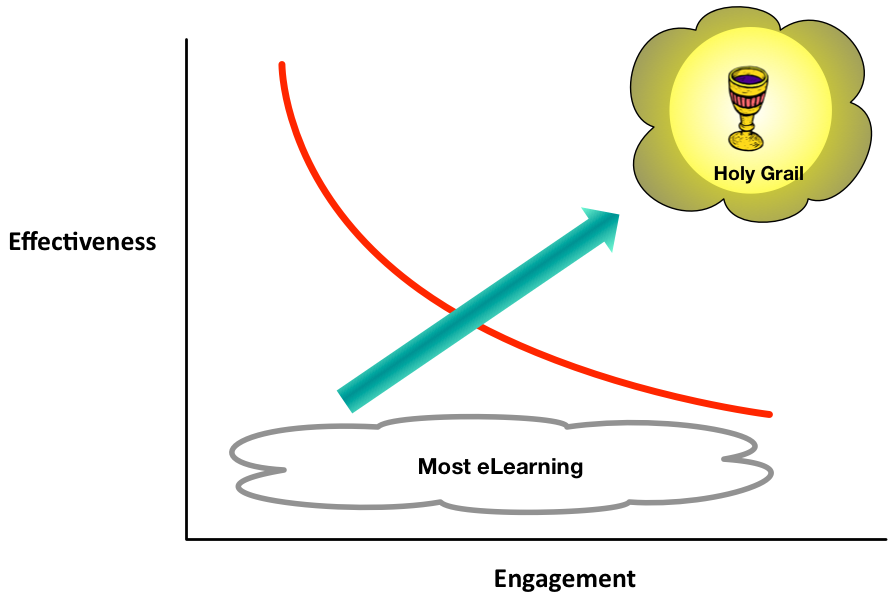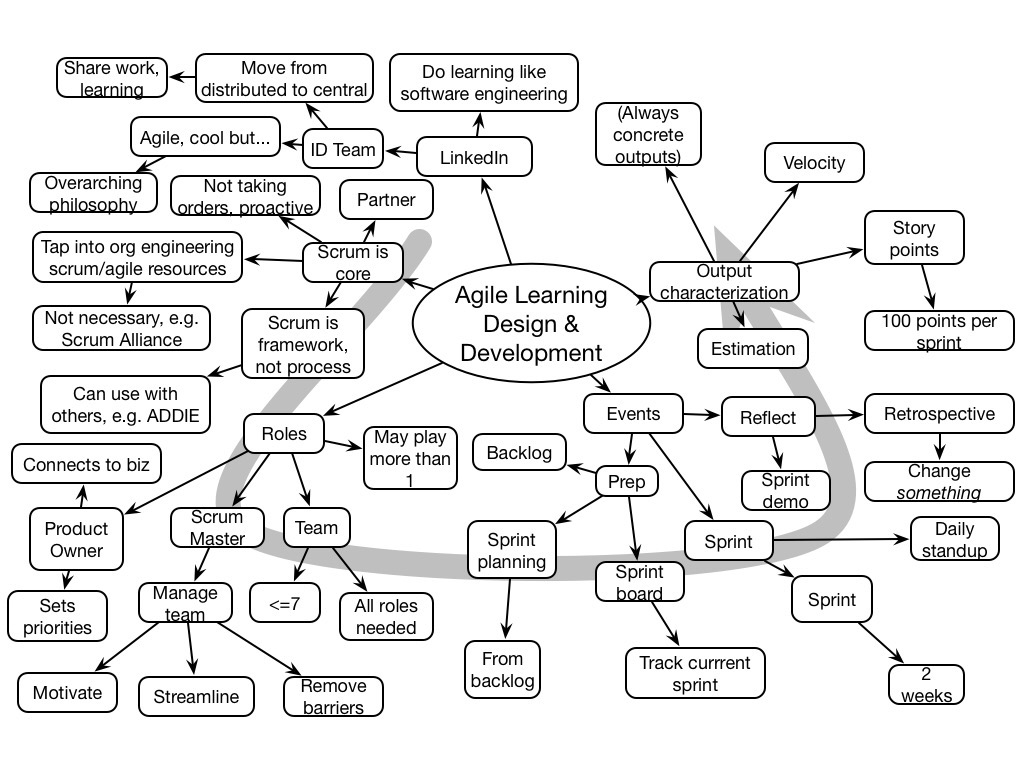Someone tweeted about their mobile learning credo, and mentioned the typical ‘mlearning is elearning, extended’ view. Which I rejected, as I believe mlearning is much more (and so should elearning be). And then I thought about it some more. So I’ll lay out my thinking, and see what you think.
I have been touting that mLearning could and should be focused, as should P&D, on anything that helps us achieve our goals better. Mobile, paper, computers, voodoo, whatever technology works. Certainly in organizations. And this yields some interesting implications.
So, for instance, this would include performance support and social networks. Anything that requires understanding how people work and learn would be fair game. I was worried about whether that fit some operational aspects like IT and manufacturing processes, but I think I’ve got that sorted. UI folks would work on external products, and any internal software development, but around that, helping folks use tools and processes belongs to those of us who facilitate organizational performance and development. So we, and mlearning, are about any of those uses.
But the person, despite seeming to come from an vendor to orgs, not schools, could be talking about schools instead, and I wondered whether mLearning for schools, definitionally, really is about only supporting learning. And I can see the case for that; that mlearning in education is about using mobile to help people learn, not perform. It’s about collaboration, for sure, and tools to assist.
Note I’m not making the case for schools as they are, a curriculum rethink definitely needs to accompany using technology in schools in many ways. Koreen Pagano wrote this nice post separating Common Core teaching versus assessment, which goes along with my beliefs about the value of problem solving. And I also laud Roger Schank‘s views, such as the value (or not) of the binomial theorem as a classic example.
But then, mobile should be a tool in learning, so it can work as a channel for content, but also for communication, and capture, and compute (e.g. the 4C’s of mlearning). And the emergent capability of contextual support (the 5th C, e.g. combinations of the first four). So this view would argue that mlearning can be used for performance support in accomplishing a meaningful task that’s part of an learning experience.
That would take me back to mlearning being more than just mobile elearning, as Jason Haag has aptly separated. Sure, mobile elearning can be a subset of mlearning, but not the whole picture. Does this make sense to you?

